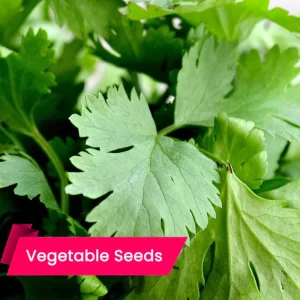
Coriander, having aromatic flavor and versatility, is a nutrient-rich herb. Coriander is a popular addition to many dishes, both vegetarian and non-vegetarian. However, like other veggies, coriander leaves might have pesticides, which can be harmful. Here’s a simple guide to growing coriander at home safely and ensuring good quality:
Choosing the Right Environment:
Ensure your containers have proper drainage to avoid waterlogging and prepare a potting mix. A potting mix is a mixture of soil, vermicompost, and compost in a 40:40:20 ratio, with added lime for optimal growth. Incorporate neem cake into the soil to repel pests, and aim for a soil pH of 6.2 to 6.8 while ensuring your planting area receives ample sunlight.
Planting the Seeds:
Use top-notch coriander seeds, like those from trusted sources such as Maha Agrin seeds. Soak them in water for 24 hours, and dry them before planting them directly into grow bags or pots, or gently crack them wrapped in cloth or paper and rolled with a pin. Optionally, consider treating the seeds with a Pseudomonas solution for better germination.
Germination and Care:
Plant the seeds half an inch deep, cover with soil, and water gently to keep the soil moist. Keep an eye out for pests, apply neem oil or panchagavya as needed, and add compost every 10-15 days while removing weeds.
Harvesting:
You can harvest coriander 4 to 6 weeks after planting. Pick leaves when mature, and depending on soil, you might harvest weekly.
Coriander, having delightful aroma and antioxidant properties, offers versatile culinary applications and various health benefits. It aids in reducing blood sugar levels, combating infections, and supporting overall heart, brain, skin, and digestive health.
